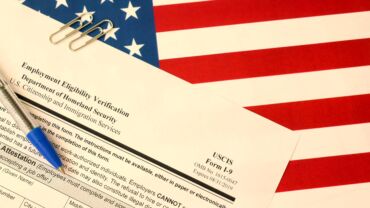Although the new worker classification rule is delayed up until October 2023; there is still much to discuss on the topic, from analyzing if there can ever be one universal rule to determine a worker's status, to discussing what role, if any, might artificial intelligence play in knowing who is an employee and who is not.
The U.S. Department of Labor (DOL) recently indicated that the final version of the worker classification rule it proposed last year will be delayed up until October 2023. The rule would change the current, more abbreviated and employer-friendly version of the DOL’s economic realities test, back to something representing its prior rule that would rely on several factors, which tend to favor an employee relationship.
Recently, Checkpoint Payroll Update had the opportunity to speak with two labor and employment law specialists and subject matter experts. The conversation provided a deep dive into the complicated and seemingly ever-changing answer to one of the most basic and also challenging questions an employer faces - is the worker an employee or an independent contractor?
Background on DOL’s rule. The DOL and the courts have applied an economic reality test to determine whether a worker is an employee or an independent contractor under the Fair Labor Standards Act (FLSA) for more than seven decades, according to its October 13, 2022 notice of proposed rulemaking to revise its analysis for determining employee or independent contractor classification.
However, near the end of the Trump Administration, the DOL finalized a worker classification rule in January 2021 (effective date of March 8, 2021) that identified five economic reality factors but specifically focused on the following two “core factors” as the most probative in the analysis – the nature and degree of control over the work and the worker’s opportunity for profit or loss.
“It was a pretty significant shift because it was going from looking at a lot of different factors, which could weigh in favor or against someone being classified as an employee, to looking at two more limited factors,” said Anne Sekel, managing partner of Foley’s New York office and member of the firms’ L&E practice.
Shortly after President Biden took office, the DOL delayed the effective date of the rule until May 7, 2021. Then, on May 5, 2021, the DOL announced that it was withdrawing the final independent contractor rule, just one day before the delayed effective date was to take place.
“Once the Biden Administration began, it seems like they took some time to look into what they wanted to do with independent contractors given the proliferation of the gig economy,” noted Mark Wallin, partner in Barnes & Thornburg’s L&E, Wage and Hour, and Employment Litigation practice groups. Gig work has been on the rise since the Great Recession and a 2018 U.S. Census Bureau post showed the number of app-based drivers more than tripled between 2013 and 2016.
However, the Biden administration and the DOL received some pushback in the courts with regard to withdrawing the two “core factor” worker classification rule and on March 14, 2022, in a lawsuit challenging the DOL’s delay and withdrawal of the 2021 IC Rule, a federal district court in the Eastern District of Texas issued a decision vacating the delay and withdrawal rules.
In response to the ruling, the DOL issued a notice of proposed rulemaking in the Fall of 2022 that would remove the two “core factor” test in favor of one that looks at a multiple-factor examination to determine if an employer-employee relationship exists. “Now, the DOL is shifting back sort of to the pre-2021 framework where you’re again going to be permitted to look at a lot of different factors,” Sekel explained.
The final rule was initially to be issued by the DOL in May of this year. However, on June 9, 2023 the U.S. Court of Appeals for the Fifth Circuit granted a 120-day delay to further proceedings related to a DOL appeal in response to the federal district court ruling back in March 2022 to allow the DOL time to complete its rulemaking. The DOL said it continues to review the more than 54,000 comments received on the rule.
Although the DOL indicated an August 2023 final rule release in the Office of Information and Regulatory Affairs’s (OIRA) Spring Agenda , the 120-day delay allows the DOL until October 2023 to finalize the rule.
One rule to rule them all? Besides the recent and upcoming changes to the DOL’s worker classification rule, there are other rules for determining if an employer-employee relationship exists. For example, the IRS uses a common law test for determining worker status that examines the relationship between the individual and the business by considering all evidence of the degree of control and independence in the relationship. There are also worker classification rules at the state level, which can add to the confusion of getting it right with classifying a worker correctly.
During a Congressional subcommittee hearing on April 19 about independent contractors, one of the witnesses submitting testimony on the topic stated that the country needs “a single, clear, and simple” rule for determining who is an employee and who is an independent contractor. However, given the different rules in the various jurisdictions, is it even possible?
Sekel explained that a closer look shows that although the rules may have different names, the list of factors involved in making a determination is similar. “At its core, you’re just looking at the nature and degree of the independence or lack of independence between an individual and an entity that’s using the individual’s service,” she said, but added that the complexity comes from there being “no consensus on where that line should be drawn for purposes of classifying someone as an employee or not.”
Wallin explained that “it’s just the way that the country is set up with the states having the ability to go a little bit farther than the federal government,” regarding the different classification rules. He continued to say that “it’s very difficult to ever have a single standard, as nice as one would be,” and noted that “when the party in power changes in Washington, they each have their own way of looking at things.”
Sekel echoed that thought by saying “there’s always going to be a push and pull with respect to [worker classification].”
“To have one standard, I think, would be helpful and useful for employers, [but] with the way things operate practically, that’d be extremely difficult,” Wallin concluded regarding issues of having one straightforward worker classification rule across the United States.
ABC test catching on with more states. Since 2020, one state in particular has been getting a fair amount of attention when it comes to the ongoing challenges with worker classification - California. Signed into law in 2019 by Governor Gavin Newsom, Assembly Bill 5 (AB5) codified the Dynamex Operations West, Inc. v. Superior Court (2018) 4 Cal.5th 903 ruling with an ABC test (see Payroll Guide ¶19,045 ) that generally considers all workers employees unless the employer can prove each part of the three-factor test.
Wallin noted California’s ABC test “looks a lot different than the totality of circumstances test that…[the Biden Administration] is pushing forward.” In fact, Acting Labor Secretary Julie Su, who is awaiting a Senate vote for approval as the DOL’s 30th Labor Secretary after Marty Walsh stepped down on March 11, 2023, clarified in an April 20 Senate Committee on Health, Education, Labor, and Pensions (HELP) hearing that the “DOL already stated it does not have the authority under the FLSA to implement an ABC test absent of an act of Congress.”
Wallin acknowledged that “especially in the gig economy, [the ABC test] can be a difficult standard to meet” but he does see “the ABC test, or some version thereof, catching on more” at the state level. He explained that “California is sort of a trendsetter in a lot of ways” when it comes to this more employee-friendly classification test and states like New Jersey, Massachusetts, and Illinois all enforce a similar version of it.
In addition to the court battles in the trucking industry and app-based driving companies, California’s ABC test can make matters more confusing for employers due to the number of exceptions to AB5. ”There are a laundry list of industries that are carved out of AB5 in the ABC role,” Wallin stated. He explained that having a powerful lobby group helps with regard to getting an exception to the state’s test or even a ballot initiative like Proposition 22.
However, the U.S. Supreme Court recently declined to hear a First Amendment-based case against California’s ABC test. This rejection comes after groups, like Mobilize the Message LLC and Moving Oxnard Forward Inc.’s lawsuit against California, was dismissed by the Ninth Circuit Court of Appeals last year with a claim that the law infringes upon free speech rights.
Tips and guidance for worker classification. Misclassifying a worker as an independent contractor, instead of as an employee, can result in large backpay and damage awards following an investigation from the DOL’s Wage and Hour Division (WHD). For example, the WHD recently announced the recovery of $650,000 in unpaid overtime wages for 26 delivery drivers of a Santa Fe, California food manufacturer that classified them as independent contractors exempt from overtime. As such, it is in an employer’s best interests to plan and document its hiring process.
“When you have a hiring or retention need, if you’re sitting down and you’re saying – I’m either going to hire someone or I’m going to engage the services of someone – have the list of factors that will be considered in front of you and then you’re writing the job description in an accurate and truthful manner with those factors in mind and you’ll get, I think, to the right answer,” Sekel explained about initiating a worker classification process in a business.
She continued to advise employers not to end up in a defensive position by looking at the worker classification factors when it’s too late “but rather do it prospectively, every time [employers are] looking to engage the services of someone.”
Sekel further counseled larger organizations with many different departments to “make sure that each of those groups has the same information when you have a lot of different participants in the hiring process.” Two of the three relief provisions in Internal Revenue Code §530 relief from taxpayer employment tax liability when an individual is not treated as an employee is consistency – both reporting and substantive (see Payroll Guide ¶2315 ).
Wallin also stressed that the starting point for worker classification with an employer is “always going to be the contract.” He added, “You make sure that the contract provisions that are in there indicate, you know, not just spelling out that they’re an independent contractor, but there’s indicia there that the company is not controlling them – they’re not controlling their schedule, they’re not hourly workers.” He further suggested ”a survey of case law for wherever you are, wherever your jurisdiction is” to help businesses understand the rules for classifying individuals as employees or independent contractors.
On top of that, Sekel offered a more cautious approach regarding worker classification. “When you can err on the side of classifying someone as an employee, you should do that,” she said, explaining that it is the most expedient way to stay in compliance, though not necessarily the most financially viable. “And then you kind of walk backwards from that point based on financial considerations,” she stated and acknowledged that “it’s much more difficult when it has a real meaningful financial impact.”
Post-pandemic remote work. A February 16, 2022 PEW Research Center survey showed that around six-in-10 U.S. workers who say their jobs can mainly be done from home were working remotely from home or most of the time. Although the survey illustrates a decline in remote working from October 2020 when some 71% of individuals with jobs that could be done remotely were working from home or most of the time is notably higher than the 23% who say they teleworked frequently prior to the COVID-19 pandemic.
Now, after the pandemic health emergency (PHE) has ended (May 11, 2023) in the U.S., the remote and hybrid workforce remains to a certain extent and plays a role with regard to worker classification.
“It’s not even a big employer issue anymore,” Sekel said, regarding the consideration businesses have to give to various state worker classification laws in an environment after the PHE. “It’s crazy how the post-pandemic remote work has brought to the forefront the variation between states because everyone has to confront it now,” she added regarding more attention required for the differing state worker classification laws.
“It is really, really burdensome to try and figure this out on your own and keep up because it also changes so quickly,” she emphasized and stressed that hiring local counsel or payroll professionals to “stay abreast of it so you’re not inadvertently falling out of compliance” can be beneficial.
Can AI help with worker classification? In the payroll industry, like many others, next-generation artificial intelligence (A.I.) solutions are coming to the forefront, disrupting some of the more traditional work functions. At PayrollOrg’s annual Congress event in Denver, Colorado, Pete Tiliakos, an analyst and founder of GxT Advisors, believes that this next-gen technology will not replace the payroll profession but instead transform it into a more collaborative process within a business.
That said, can A.I. help employers and payroll professionals determine who is an employee and who is an independent contractor? ”In the future, there is the possibility that it will be a tool,” Sekel said regarding an A.I. worker classification solution, but also explained that A.I. “could exacerbate the problem.”
She continued to say that “if there’s more of a coalescence around particular definitions or around particular employment models…or independent contractor models, and that is out there to be drawn upon…I think A.I. could do an amazing job and could really streamline everything and take a lot of the questions and debate and uncertainty out of different classifications.”
Wallin also thought that there might be “a way to use A.I. to perform the analysis on whether or not a particular job classification is going to meet whatever the particular standard is in your jurisdiction,” which “could be useful.”
However, Sekel concluded that ”if you just take a snapshot of what is happening right now, across the country on the federal and state level, A.I. is not going to do anything in my view.”
Much ado about nothing with rule change? The DOL’s delay in releasing its final rule regarding the employer-employee relationship under the FLSA may be welcomed by some businesses still trying to understand what the changes may mean for the current classification of their workers.
Among the tens of thousands of comments received by the DOL, a tech industry coalition said that the rule would deal a blow to gig workers, especially women who make up to 58% of Door Dash drivers and 50% of Uber delivery drivers. A law firm association offered conditional support for the rule but criticized the multi-factor approach, claiming it leads to inconsistent results.
Wallin thinks “that when new rules come out, there is [going to be] a strong initial reaction depending on what side you’re on.” To his point, the nearly 55,000 comments submitted show strong feelings for or against the upcoming rule.
However, Sekel admitted that she has “not heard a lot of concern or confusion or debate about it.” She said that “it is not so different from what had been in place since 1938” and added that “businesses have been used to having to think about a lot of different factors that could go into the determination because that’s the way it’s been with the DOL for a long time.”
“While its always of concern when there is a change, I don’t think that really this is a moment that requires a lot of change,” Sekel reasoned. “I think it’ll be more awareness of the fact that there will be more weight given to the other factors.”
Agencies sharing information. In addition to understanding the various factors for worker classification at the federal and state levels, creating a clear employment contract, and maintaining accurate worker records, further clarity on the topic may reside with the various agreements federal and state agencies have with each other.
For example, the DOL and IRS issued an agreement at the end of 2022 about employment tax referrals to improve compliance with the laws and regulations administered between the two agencies with enhanced information sharing and other collaboration.
Sekel explained that the DOL’s website has a page illustrating all of the memorandums of understanding (MOU) with states across the country concerning various laws that the WHD enforces, including ones that address misclassification. An MOU with New York that started on June 13, 2022 states that the agencies “will share information about the identification and investigation of complex or fissured employment structures, including single or joint employer, alter ego, and business models designed to evade legal accountability, such as the misclassification of employees.”
“The more that there is information sharing, and the more that there is an effort to identify overlap and differences, I think the closer we’ll get to a standard definition or standard way of approaching these things…and where people want to go with it, in terms of outcomes,” Sekel said.
Importance of audits. The IRS’s Inflation Reduction Act (P.L. 117-69) Stragegic Operating Plan for the fiscal year 2023 through 2031 includes notable funding for enforcement. When the plan was announced in April of this year, a former senior litigation counsel at the U.S. Department of Justice (DOJ) stressed that since plan mentions more enforcement in areas that include employment taxes, businesses should start planning for audits “now.”
One of the ways to prepare for a government audit is for a business to actually perform an internal or external audit to make sure it is in compliance, which includes laws and rules relating to worker classification. But there are also other measures that can be taken to make sure an organization is following the law.
Sekel said that since audits can be a “big undertaking and a huge expense…there’s a lot of effective control that you can do without even fully undertaking an audit.” She mentioned having job descriptions and titles “be part of the yearly process that your HR department undertakes” as it “will go a very, very long way, especially if that HR person is pretty knowledgeable about classification issues.”
Wallin noted that “it’s good to look at the [employment] contracts and make sure the contracts are consistent with what the new [worker classification] rule is” and “doing an audit of some sort with your independent contractors” will help with compliance.
“See what they’re actually doing, see how the business is actually treating them,” Wallin reasoned. ”It’s one this for HR or legal to craft a description of the work, but if whoever the internal business point of contact is with that worker, they’re treating them as an employee, then all the work that was done on the contract goes out the window.”
Wallin finished by saying worker classification “starts with a contract and then…you really need to audit the position” and ensure “that actual actions are consistent with independent contractor versus employee.”
Learn more about Thomson Reuters payroll solutions and request a free trial.










